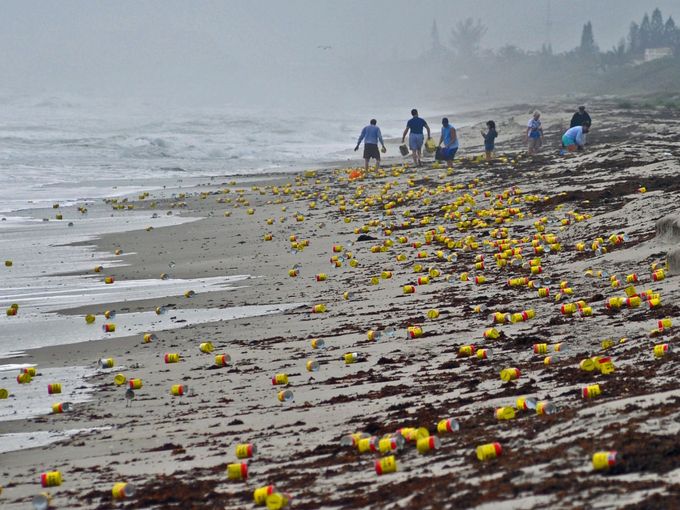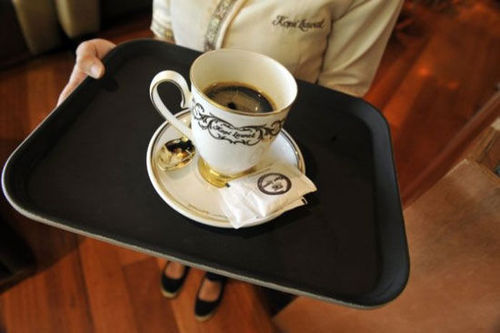Korean experts take inspiration from coffee residue to use "coffee residue" to store greenhouse gases.
Polaris Energy Saving and Environmental Protection Network: an expert at the National Institute of Science and Technology in Ulsan, South Korea, took inspiration from coffee residue and plans to use it for methane storage. In this paper, the work flow and principle of coffee residue treatment are introduced, and the advantages and disadvantages of this method are briefly analyzed. Due to the low cost of coffee residue, after methane is captured and stored, it can be used as a kind of energy, it is a low-cost way to deal with greenhouse gases, and according to the current preliminary forecast, its application in industry can be realized in the future. We can imagine how many pots of coffee people make every day and how many coffee residues will be poured into the sewers! Can these residues be used to store carbon in methane? Will this put an end to the "burning age"? If this is the case, we can use coffee residue, tea residue or distiller's grains as carbon storage in the future. According to an article in Nanotechnology published in the September 2015 issue of the British physical Society Press (IOP), researchers at the National Institute of Science and Technology (UNIST) in Ulsan, South Korea, have invented a new technology that can convert coffee residues into carbon storage. Of course, researchers must analyze the best coffee residues, deep roasting and fine grinding 100% pure Colombian coffee beans to find a simple and inexpensive way to store methane in the atmosphere.

Soak the coffee residue in potassium hydroxide solution, heat to 65 degrees Celsius (149 degrees Fahrenheit) and stir for 24 hours, then dry the mixture. As described in the article, the mixture is dried in an oven of 100 degrees Celsius (212 degrees Fahrenheit) and then placed in an argon furnace between 700 and 900 degrees Celsius to activate its carbon storage capacity. The above is the method recorded in the article. In less than a day, we can produce stable substances that can store carbon, and researchers say the material they make takes less time than other types of carbon storage carriers.

Christian Kemp, a veteran researcher at the National Institute of Science and Technology (UNIST) in Ulsan, South Korea, said: "compared with metals and expensive and necessary organic chemicals, coffee grounds, a waste raw material, is free, and I think it is a simple and long-term method." In fact, when Kemp stared at the coffee residue in the cup, he suddenly found inspiration and came up with this method. "We were sitting together drinking coffee, and I looked at the coffee residue and thought, 'can we use this to store methane?'" When coffee residue captures and stores methane, it can be used as a source of energy. According to the current preliminary forecast, we can make use of it in industry.

Another substance, tea dregs may not be of much use, and the study of tea dregs is like the typical example of the Arctic development project at the bottom of Alaska. On September 28th Royal Dutch Shell confirmed that it had abandoned exploration and development of the Burger Jwildcat field in the Chukchi Sea in Alaska. Shell has invested 7 billion dollars in Arctic development projects, and although it has also developed some oil and gas, it has produced very little, and it turns out that Burger is no longer worthy of further development.

Another case is the disappointing Mukluk1 well in the Beaufort sea area. It can be said that the well is well known, and on January 20, 1984, the oil company led by BP finally blocked and terminated the development plan for the Mukluk well. At the time, the risk of the project was considered small, but it turned out that the Mukluk well was once the most expensive ($430 million) oil-free well in history. But, like the Burger Jwildcat oil field, no matter how good the seismic images look, they are not necessarily risk-free. There is a basic principle in the oil and gas industry-companies will not know what the real situation is until they have drilled.

This also confirms our research on tea residue mentioned above, although after a large number of tedious experiments, we finally found that it is not very useful in storing methane, and it is gratifying that we have identified the potential of coffee residue in storing methane. Although this technology is feasible in theory, it has not been applied in the field yet, and we look forward to seeing the contribution of coffee residue to environmental protection in the future.
Source: oil Circle Wechat
Important Notice :
前街咖啡 FrontStreet Coffee has moved to new addredd:
FrontStreet Coffee Address: 315,Donghua East Road,GuangZhou
Tel:020 38364473
- Prev

How is it that thousands of cans of coffee are washed up on American beaches to attract locals and tourists to pick them up?
Hundreds of yellow coffee cans appeared on Cape Canaveral Beach in Florida on Tuesday morning local time. Hundreds of yellow coffee cans appeared on Cape Canaveral Beach in Florida on Tuesday morning local time, police and local residents said. Local resident Laurie Cus said coffee cans can be seen everywhere on the beach.
- Next

Indian Palace Cafe one of the most beautiful cafes in the world is a must for travel.
The Indian Palace Cafe is one of the most beautiful cafes in the world. Indian Coffee Indian Palace Cafe is one of the most beautiful cafes in the world. The cafe in the Palace Hotel in the Indian state of Rajasthan has British colonial characteristics. The cafe is open from breakfast until midnight. The rattan chairs and tables in the hallway have local characteristics. Waiters dressed in Indian clothes kept entertaining them back and forth for a holiday
Related
- What is the standard process for the purpose of coffee cup testing? What is the difference between hand-brewed coffee and cup testing?
- How to use hand-brewed coffee paragon small golden balls? How does cold coffee lock in the aroma of coffee?
- Is American coffee black? What is the difference between American coffee and drip coffee?
- Unexpected! Well-known tea beverage brand Lele Tea will withdraw from the Zhengzhou market!
- Starbucks enters the fashion and beauty industry?! Netizen: Give me an ice American eye cream
- Why can American refills for free? The difference between Americano and American drip pot coffee
- Being chased out of the rain in front of Starbucks?! Store: Sheltering from rain under umbrellas poses a safety hazard
- The white moonlight has changed?! Lucky launches "Big Winter Pear American"
- Hand-brewed coffee three-stage method, high-sweet and universal brewing method to share! What does the high sweet water level of hand-brewed coffee mean?
- What is the difference between raw, refined and full espresso coffee? How to extract espresso and taste good?

